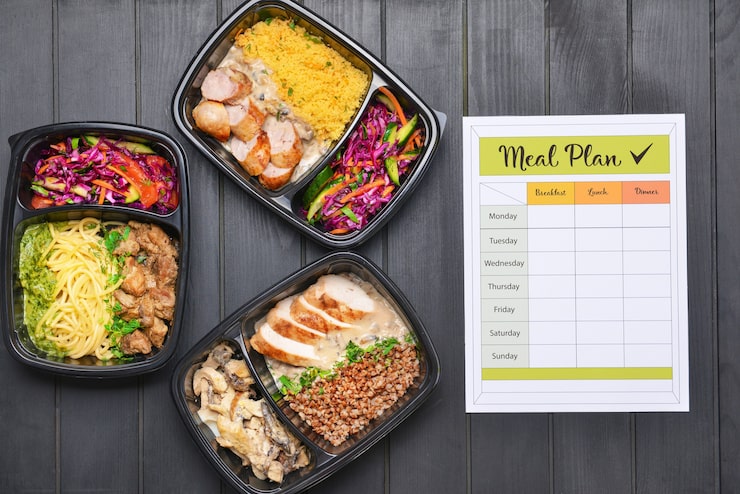Introduction
If you’re a student juggling classes, part-time work, commute hours, and assignments, the idea of cooking daily may feel impossible. That’s exactly why meal planning students is becoming one of the top survival strategies across Canadian campuses.
But here’s the good news:
You don’t need a full kitchen, complicated recipes, or even cooking skills to eat well.
With smart planning—and the help of modern tools like Studelicious, where you can access smart, pre-planned meal options—you can save time, money, and energy every single week.
This guide will help you create a weekly meal plan students can follow even when they have zero time to cook.
Why Meal Planning Matters for Time-Starved Students
Meal planning isn’t just about food — it’s about reducing stress, saving money, and boosting your energy levels.
Here’s why it works so well for students:
1. Saves 6–8 hours per week
No more last-minute grocery runs or standing in the kitchen worrying about what to eat.
2. Helps you stick to a healthy routine
You can add healthy student meals without cooking and avoid skipping meals.
3. Reduces overspending
Meal planning supports a strong student food budget weekly plan, helping you avoid impulse purchases.
4. Minimizes food waste
You buy only what you need, or even better—use pre-planned student meals Canada through Studelicious.
5. Supports academic performance
Better nutrition = better focus.
How to Start Weekly Meal Planning When You Have No Time
Even if you’re living alone, commuting daily, or sharing a tiny dorm kitchen, you can meal plan easily.
Step 1: Assess Your Schedule
Look at:
- Class timings
- Work shifts
- Study blocks
- Social time
This helps identify when you actually have time to eat.
Step 2: Choose No-Cook & Minimal-Cook Options
Almost all meal planning for students with no time revolves around:
- Ready-to-eat items
- Sandwiches & wraps
- Overnight options
- One-bowl meals
- Smoothies
Studelicious can complement your weekly plan by giving you easy weekly meals students love—especially on days when your schedule explodes.
Step 3: Set a Weekly Food Budget
Canadian students usually spend $60–$120/week on food.
A budget helps determine whether you cook, prep, or use smart food platforms.
Step 4: Plan 70% No-Cook Meals
This meets the needs of:
- Students with no kitchen
- Busy students
- Students living in residence
- Students working evening shifts
Step 5: Repeat Your Best Meals
Meal planning becomes far easier when you recycle meals you enjoy.
Easy No-Cook & Minimal-Cook Meal Ideas (Perfect for Busy Students)
Here are simple no-cook and minimal-cook meal ideas that work well for students with busy schedules and limited kitchen access.
1. Grab-and-Go Sandwiches
- Egg salad
- Turkey & hummus
- Veggie sandwiches with cheese
2. Protein-Packed Salads
- Tuna + chickpeas
- Greek salad bowls
- Avocado & quinoa bowl (microwave only)
3. Overnight Breakfast Jars
- Overnight oats
- Yogurt + chia pudding
4. 3-Minute Dorm Meals
- Microwave pasta bowls
- Instant rice + pre-cooked chicken strips
- Microwave burrito bowls
5. Energy Smoothies
- Banana + peanut butter
- Mango + protein
- Spinach + apple green smoothie
6. Snack Packs for Long Days
- Fruit
- Cheese cubes
- Crackers
- Nuts
These options support meal planning students even with the tightest schedules.
A Weekly Meal Plan for Extremely Busy Students
This 7-day plan is optimized for student meal planning Canada and fits dorm rooms, minimal kitchens, and busy routines.
Monday
- Breakfast: Overnight oats
- Lunch: Chicken wrap
- Dinner: Microwavable rice bowl
Tuesday
- Breakfast: Greek yogurt + granola
- Lunch: Tuna salad
- Dinner: Pasta bowl
Wednesday
- Breakfast: Smoothie
- Lunch: Veggie sandwich
- Dinner: Pre-planned Studelicious meal
Thursday
- Breakfast: Chia pudding
- Lunch: Burrito bowl
- Dinner: Soup + bread
Friday
- Breakfast: Fruit bowl
- Lunch: Chicken Caesar wrap
- Dinner: Studelicious mood-based meal
Saturday
- Breakfast: Pancakes (5 minutes)
- Lunch: Leftovers
- Dinner: No-cook salad bowl
Sunday
- Breakfast: Coffee + protein muffin
- Lunch: Deli sandwich
- Dinner: Weekly prep refills
This plan fits easy weekly meals students without cooking.
Budget Tips for Smarter Meal Planning
Strong tie-in with the keyword budget meal planning students
1. Buy multi-purpose ingredients
Examples:
- Eggs
- Bread
- Oats
- Rice
- Frozen vegetables
2. Shop store brands
Cheaper, same quality.
3. Use Studelicious for bundle meals
You can save a lot by ordering:
- Student packs
- Weekly bundles
- Pre-planned meal sets
4. Avoid daily takeout
Once or twice a week is fine, but daily takeout destroys budgets.
5. Track your weekly food spending
This supports your student food budget weekly plan.
Common Mistakes Students Make in Meal Planning
Avoid these:
Planning too many complicated meals
Buying ingredients you never use
Skipping breakfast
Not storing food properly
Relying only on takeout
Studelicious helps reduce all of these by offering balanced, affordable, and convenient options.
FAQs
1. What is the easiest weekly meal plan for busy students?
A no-cook or minimal-cook plan with overnight oats, sandwiches, microwave bowls, salads, and smoothies is easiest and fastest.
2. How can students eat well without cooking?
Use ready-to-eat foods, grocery store prepared meals, and smart pre-planned meals from services like Studelicious.
3. How can Canadian students save money on food?
Buy multipurpose groceries, avoid daily takeout, and use budget meal bundles available for students.
4. What if I don’t have a kitchen in my dorm?
You can rely on no-cook meals, microwavable items, and pre-planned meal kits designed for small-space living.
5. How many meals should students prep weekly?
5–10 meals per week is ideal depending on schedule, classes, and whether you have evening shifts.




